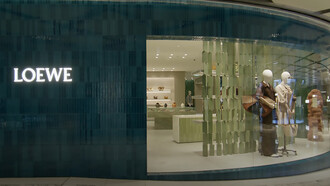Architectural professionals frequently prioritize liminal landscapes, creating transitional spaces. The possibilities often blur the separations between architecture and the nearby terrain. What results can people get with this approach? More importantly, why does it matter?
Inviting people to experience the familiar and new
Well-designed liminal spaces support visitors’ spatial transitions. That’s the goal of a new cultural hub in Bergen, Norway. It features a performing arts centre, exhibition space, and outdoor plaza.1 Architects hope to create a community space and cultural hub.
The new concert hall creates seamless transitions between indoor and outdoor spaces. There’s also a multipurpose rehearsal space. Its telescopic amphitheatre mirrors the main stage and seats 140 people. Kasper Kyndesen—the project’s design director—aimed to invite city dwellers to enjoy both the urban environment and new cultural opportunities. Then, they can enjoy well-known outdoor settings and treat themselves to memorable performances.
The café includes a sheltered area for outdoor access and weather protection. The open-air plaza supports local ecosystems, too. Its water-management features prioritize sustainability. The space’s dramatic contours attract attention and utilize sunlight.
Because it’s located near the mountains and water, this venue encourages occupants to enjoy nature and gorgeous views. The carefully landscaped exterior enriches downtown, encouraging people to stop by for the first time.
The large, open spaces are also great for planting additional greenery. Landscapers must select shrubs appropriate for the surrounding natural light. Options that grow no more than 3 to 4 feet are simple to maintain.2 They will not need extensive annual pruning. Most plants grow more slowly as they mature. However, growth still happens at all ages. That reality makes low-maintenance varieties particularly appealing.
Building homes underground to reap many benefits
Partially underground homes feature some of the most dramatic examples of blurred boundaries. These are not new options but have recently become more popular. The structures become part of the terrain while providing numerous residential benefits.
A Wisconsin couple has had an underground home since 2016.3 They visited a friend’s underground home decades earlier and became inspired to have one, too. It looks like a mound surrounded by prairie grasses. People can only tell it’s a house from the front. Energy efficiency is one of the main benefits of living there. The occupants estimate their monthly utility bill is no higher than $115. That’s significantly lower than the state average.
The home has south-facing windows to keep it warm during the day. However, its underground position keeps the interior temperature consistently comfortable. A single wood-burning stove is sufficient for warmth during most winters.
Other occupants of underground homes appreciate their durability. Tornado damage is rare. The structures have also survived earthquakes without requiring major repairs. Since earth-sheltered homes are naturally resilient, they often cost less to insure than their counterparts. That durability is especially appealing due to many areas experiencing more severe weather events.
Underground homes are not unique in their unusual appearance. Architects have built residences that appear upside-down or crooked. One egg-shaped structure is among the trees and surrounded by forest.4 However, benefits blended with beauty could increase overall appeal.
Bringing the environment and ecology into urban designs
Some architects view the land as a mere foundation for their projects. However, others recognize that the surroundings can enrich their results. That’s the idea behind Studio-MLA.5 This Los Angeles-based firm seeks to connect humans with nature. Meeting that goal could mean planting more trees or creating public parks. However, many efforts are more extensive.
One current project is 670 Mesquit in the local arts district. It features approximately 1,000 units. The tenants include a hotel, charter school, shops, and restaurants. Additionally, the site will reduce the boundaries between visitors and the Los Angeles River.
Railway lines surrounding it prevent people from seeing and interacting with it. However, a river deck is a focal point of this project. It structurally coordinates with the train infrastructure and encourages communities to immerse themselves in nature.
Another example of the firm’s work is a huge production studio campus. Spread across 15 acres, it features public and private open spaces, plus 16 soundstages and ample office space. The Studio-MLA team wants to make the site user-friendly to occupants and beneficial to the community. It will create positive experiences for all by emphasizing sustainability guidelines and improving the landscape components.
One of the firm’s previous projects featured a large oak tree brought by crane. Although some expressed doubts that it would do well there, it’s thriving. The designers also tucked hidden open spaces into some of the site’s corners. The resulting embedded character enhances the neighbourhood. Utilizing local craftsmanship and materials also supported the local economy.
Creating beautiful and purposeful liminal landscapes
These inspiring examples show how skilled architects can help citizens gently transition between spaces. The most effective results feature nearly invisible boundaries and include thoughtfully added characteristics. Occupants and visitors love their time spent there while appreciating the environment. Design professionals also nurture the natural surroundings rather than encroaching on them. The outcomes are mutually beneficial and memorable.
Notes:
1 Global Design News, Henning Larsen Architects’ new project blends blend urban culture and nature and is set to become the new performing arts and exhibition center that will redefine the urban landscape in Bergen, [No author listed], 8 May 2024.
2 Stadler Nurseries, Right Plant – Right Place, [No author listed], 2 February 2024.
3 The Minnesota Star Tribune, Mankato-based company builds underground houses for buyers seeking durability, energy efficiency, Alex Chhith, 29 October 2024.
4 Renovated, 10 of the Most Unusual Houses From Around the World, Olivia Elsher, 19 March 2024.
5 Los Angeles Business Journal, Q+A: Blending Urban With Nature, Brynn Shaffer, 24 February 2025.















